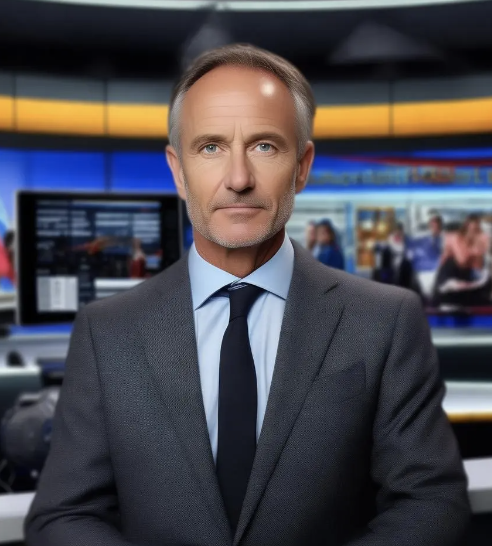Tariffs and Inflation: The Fed's Dilemma
Monday, Apr 7, 2025 11:57 pm ET
The Federal Reserve, under the leadership of Governor Adriana Kugler, finds itself in a precarious position. The recent imposition of tariffs by the Trump administration has set off a chain reaction of economic consequences, with inflation emerging as the most pressing issue. Kugler's recent statements underscore the complexity of the situation, as the Fed grapples with the delicate balance between controlling inflation and avoiding a recession.

The tariffs, which include a 10% levy on all goods imported into the U.S., are already having a consequential impact on prices. Kugler noted that *"new tariffs will be consequential, we have already started seeing some increase in prices"* (FinancialJuice, April 7, 2025). This aligns with J.P. Morgan’s analysis that tariffs will push up consumer prices by 0.2 percentage points in 2025. The immediate effect is a spike in short-term inflation expectations, as consumers and businesses adjust to the new price levels. Kugler acknowledged this dynamic, stating that *"short-run inflation expectations have moved up"* (FinancialJuice, April 7, 2025).
However, the long-term implications are less clear. Kugler claims that long-term inflation expectations remain *"well-anchored"*, supported by stable surveys and market-based measures. Yet, traders caution that this stability could be superficial. Trader#99BF provided a hypothetical example of price manipulation (e.g., egg prices spiking from $10 to $100 before settling at $60), illustrating how short-term volatility can distort expectations. If tariffs persist, long-term expectations could destabilize, leading to a more entrenched inflationary environment.
The Fed's response to these challenges has been multifaceted. Kugler supports keeping the federal funds rate at 4.25%–4.5% until inflation risks subside. This is to prevent excessive demand from exacerbating price pressures. As she stated, *"raising interest rates to cope with the tariff effect may weaken the economy, but cutting rates could drive inflation higher"* (TheStreet, April 2025). J.P. Morgan’s analysis underscores this approach, noting that rate hikes can offset tariff-induced inflation.
Communication and forward guidance are also crucial tools in the Fed's arsenal. Kugler’s public remarks (e.g., at Harvard) aim to anchor long-term expectations by signaling resolve to combat inflation. Clear communication reduces uncertainty, as seen in her focus on *"inflation expectations play in price-setting behavior"* (Reuters, April 2, 2025). The Fed is also monitoring labor markets and financial conditions, as these can amplify inflation through wage growth or supply chain disruptions.
Despite these measures, the Fed's decision to maintain high interest rates carries significant risks. The immediate consequence is a potential slowdown in economic growth. J.P. Morgan revised its 2025 U.S. GDP growth forecast downward to 1.6%, citing tariff uncertainty and retaliatory measures as key factors. The firm warns that reciprocal tariffs could push U.S. average tariffs to over 20%, severely impacting growth. The risk of a global recession has risen to 40% due to U.S. trade policies, with tariffs exacerbating supply chain disruptions and reducing trade volumes.
Market volatility and confidence erosion are additional concerns. Kugler noted that *"tariffs will be consequential"* and that financial markets are under stress. The S&P 500 and Nasdaq faced significant declines in late March 2025, with the Dow dropping ~300 points amid tariff-related selloffs. Consumer and business confidence are also moderating, which could reduce spending and investment, further slowing growth.
The labor market is another area of concern. While Kugler described the labor market as *"relatively stable"* with a 4.2% unemployment rate, she acknowledged moderation. If tariffs trigger a recession, job gains could reverse, increasing unemployment. Wage pressures are also a risk, as inflation expectations influence wage demands. If short-term inflation spikes persist, firms may raise wages, creating a wage-price spiral that could force the Fed to raise rates further, deepening economic strain.
Geopolitical and trade tensions add another layer of complexity. Countries like China, Vietnam, and the EU are threatening retaliatory tariffs, which could disrupt global supply chains and reduce U.S. exports. The Trump administration’s inconsistent tariff rollout creates unpredictability, deterring business investment. The Fed’s constrained options further complicate the situation. By keeping rates high, the Fed reduces its ability to stimulate the economy if a recession materializes. Kugler acknowledged that rate cuts *"may weaken the economy"* if inflation remains elevated, but inaction risks a sharper downturn.
In conclusion, the Fed's decision to maintain rates at 4.25%-4.5% risks a delicate balancing act: curbing inflation while avoiding a recession. However, tariff-driven price hikes, global trade disruptions, and eroding confidence could amplify inflationary pressures and economic contraction. As J.P. Morgan warns, the 40% global recession risk underscores the fragility of this approach. Without addressing tariff-related volatility or fostering productivity growth, the U.S. economy may face prolonged stagnation, mirroring Japan’s "lost decades." The Fed’s stance appears reactive, leaving limited room to address structural inflation drivers like geopolitical conflicts or supply chain fragility. The world must choose: cooperation or collapse.
Ask Aime: How will the Fed's decision to maintain high interest rates affect the US economy?




